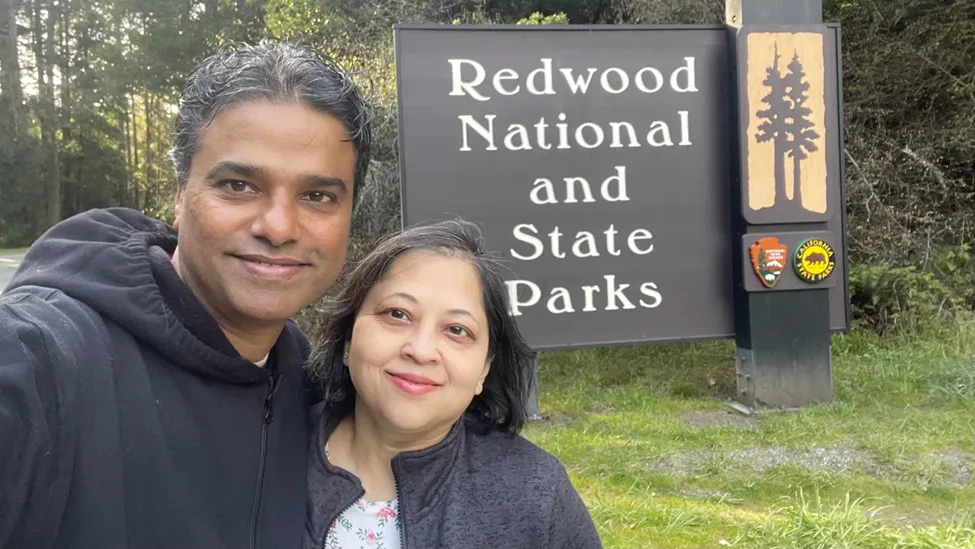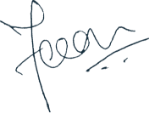Finding Solace in Our Magnificent National Parks

“National Parks are the best idea we ever had. Absolutely American. Absolutely democratic. They reflect us at our best,” said author and historian, Wallace Stegner. The idea of the National Park is as unique and radical as the Declaration of Independence: that the most special places in the nation should be preserved, not for the royalty or the rich, but for everyone.
The idea began as an experiment and as we moved in time, we kept adding and changing our notion of what a park is. Like the notion of freedom, the meaning of ‘park’ is something we have always been arguing about; we want to be true to its ideal and also allow every generation to push forward its own definition. Today there are more than 6500 parks in nearly 100 nations with Australia having the highest, more than 650!
A bill creating the first national park in the USA, Yellowstone, was signed into law by President Ulysses S. Grant in 1872. Today, 30 states have national parks, as do the territories of American Samoa and the U.S. Virgin Islands. California has the most number (nine), followed by Alaska (eight), Utah (five), and Colorado (four). Alaska has some of the largest national parks, including the country’s largest — Wrangell–St. Elias, which is over 8 million acres.
Today, the 63 designated national parks in the U.S. draw more than 300 million people a year to witness jaw-dropping natural wonders and unforgettable terrains. Of them, the Great Smoky Mountains National Park is the most visited; interestingly, 10% of the parks account for 60% of the visitors. National Park Week (which spans nine days) is celebrated annually and this year it runs from Saturday, April 20 through Sunday, April 28. The first National Park Week in 1991 marked the 75th anniversary of the National Park Service which takes care of not only the parks but also hundreds of other scenic, cultural and historical sites.
When my son Vivaan wrote, “Trees provide me more than just shade”, it was a clear indication that he loved being with nature, as did my wife and I. His words reminded me of Lancelot Jones: “I am alone but not lonely”. (The Black landowner Lancelot’s refusal to sell his islands in the Florida Keys to an oil company resulted in a movement that led to the creation of the Biscayne National Park.) So, we made it a point to visit at least one national park every year (except during COVID years). Since travelling by flight with Vivaan was hard, we decided to take road trips to all of California’s national parks.
I read extensively before every trip while my wife Deepali made all the bookings. I mostly drove while Deepali was the navigator. Packing was the hardest as we had to carry the entire kitchen (as Vivaan’s special diet had to be cooked) and tons of medicines. We preferred to stay in Airbnb homes as we always needed a kitchen. The only rule we followed was to spend at least five days in every place, so we had a relaxed time, hiked every day and experienced the local culture. Our experience contrasted sharply with the journey described in two books — Conor Knighton’s Leave Only Footprints and Mark Woods’s Lassoing the Sun — of spending an entire year covering all the national parks. Although they are interesting reads, I wouldn’t recommend covering the parks as if completing a to-do list.
Reading on this subject would be incomplete without reading about two people most responsible for wilderness conservation in the US: President Teddy Roosevelt and environmental advocate John Muir. The Naturalist by Darrin Lunde is a captivating account of how Theodore Roosevelt’s lifelong passion for the natural world set the stage for America’s wildlife conservation movement. I would highly recommend the biography of John Muir, A Passion for Nature, by Donal Worster. It is the most complete account of the environmental philosopher and the first to be based on his full private correspondence. While meeting scholarly standards, it is also full of rich detail and personal anecdote, uncovering the complex inner life behind the legend of the solitary mountain man.
The Wild Muir is an entertaining collection of John Muir’s most exciting adventures in nature, representing some of his finest writing. You can read about his dizzying exploits, everything from the famous avalanche ride off the rim of Yosemite Valley to his night spent weathering a windstorm at the top of a tree to death-defying falls on Alaskan glaciers. Muir, who is known as the Father of the National Park, summed up what they stood for: “Everybody needs beauty as well as bread, places to play in and pray in, where nature may heal and give strength to body and soul.”
The legendary Ansel Adams went to all the national parks except The Everglades; he was asked to photograph them over eight years (on a daily wage of $22). In the national park movement, Ansel Adams’s photography had the same impact as Muir’s evocative descriptive writing.
The Hour of Land by Terry Tempest Williams is a meditation and a manifesto on why wild lands matter to the soul of America. Being on the Board of Heyday Books, I had access to their publication on national parks and I thoroughly enjoyed reading The Once and Future Forest and King Sequoia. There seem to be many books about accidents and murders in national parks, but I didn’t want to read them and spoil the mood! In fiction, read Karen Barnett who has written five books set in national parks. The latest will be out this August 2024 while the first, The Road to Paradise, is based on her experience in Mount Rainier, where she was a ranger.
Ken Burns’s documentary “The National Parks: America’s Best Idea”, should be mandatory viewing for every child and adult — and viewed twice, in fact. The six-episode series (filmed across six years) captures the history of the National Park since its inception.
Finally, we should be aware of the risks to these national parks — dams, reduced budgets, rising seas — and strive to safeguard them for future generations. As John Muir reminded us, “The enemies of wildness are invisible and they are everywhere…for every acre you save, the unborn generation will rise up and call you blessed.”
Vivaan is on his best behavior inside a national park. He walks without complaint for hours, his anxiety levels are reduced, and he feels he is one with nature. Visiting national parks has not only become the best educational exercise for the entire family but it is also therapeutic. Vivaan is often sad while returning from a park, so we put a National Park sticker on the door to his room — indicating one more park covered. Every national park we go to I buy a postcard, a sticker, a poster, a book and something local. After I complete the 63rd one I plan to order a Stratton Park Ranger Hat (NPS S 44) as a memento!
Let National Park Week remind us to respect wilderness and reduce our impact on it. As Teddy Roosevelt said, “Leave it as it is…the ages have been at work on it and man can only mar it”.

